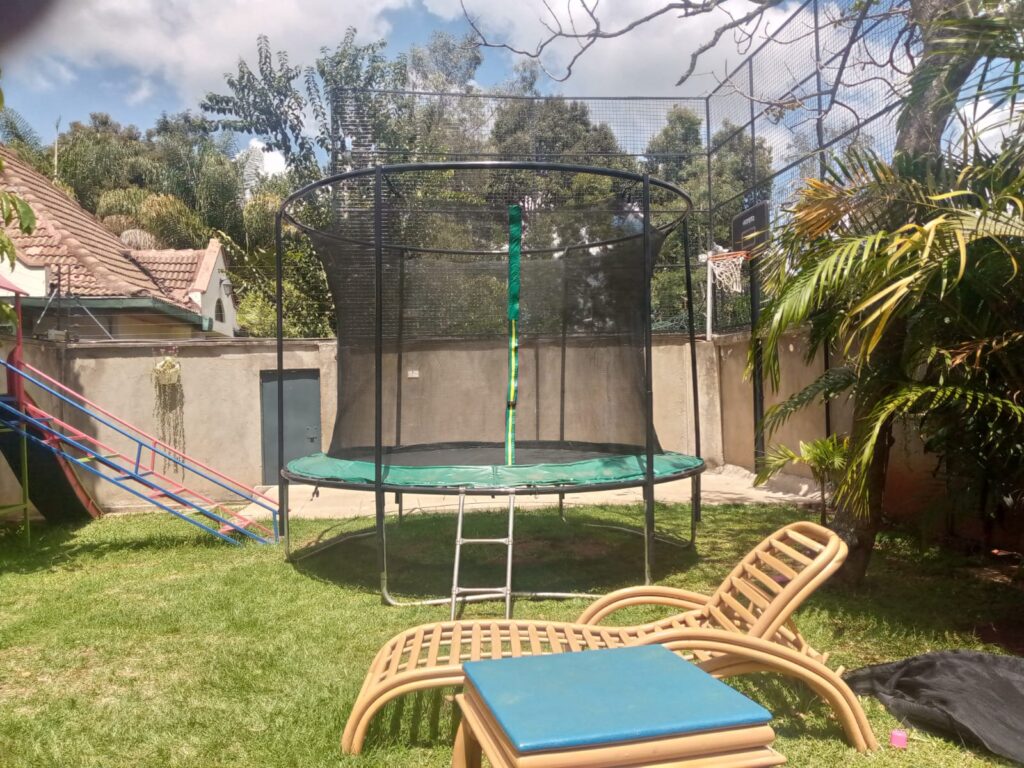How Nairobi Estates Are Embracing Shared Trampoline Spaces for Kids

In recent years, Nairobi estates have witnessed a quiet revolution in how families think about children’s recreation. As urban spaces grow tighter and private yards become a luxury, shared trampoline spaces have emerged as the latest attraction in community play areas. These installations are not just about fun—they reflect a broader shift toward safer, inclusive, and health-focused communal living in Kenya’s capital.
Visit our shop HERE to explore all our products
To order call: +254722724893
Email: info@thriftyent.com, thrifty.ent@gmx.com
Why Shared Trampoline Spaces Are Gaining Popularity
For many gated communities and apartment complexes, installing a shared trampoline space is an easy way to create a high-impact, low-maintenance attraction for children. Trampolines encourage outdoor play, reduce screen time, and offer a safe outlet for energy release, especially during weekends and school holidays.
Unlike traditional playground swings or slides, trampolines engage the entire body. They offer cardio workouts, improve balance, and promote social interaction among kids. As a result, property developers and estate managers in Nairobi estates are increasingly adding trampolines to their list of must-have amenities.
The Role of Community Play Areas in Urban Child Development
With Nairobi’s urban sprawl limiting access to large open spaces, community play areas play a critical role in ensuring that children have safe and stimulating environments. Shared trampolines, often placed in grassy common areas or near estate clubhouses, create opportunities for supervised group play and physical development.
Parents appreciate the added value, too. In neighborhoods like Kilimani, Lavington, and Syokimau, shared play zones enhance the sense of community while encouraging interaction among families. A child jumping with neighbors is more likely to develop communication skills and friendships that extend beyond the compound fence.
Implementing Safety Policies in Shared Spaces
Of course, with increased use comes a greater need for trampoline safety measures. Nairobi estates that embrace shared trampoline spaces are also adopting strict safety policies to prevent injuries and ensure proper use.
Common rules include:
Weight limits and age guidelines clearly posted near the trampoline
Use of safety nets and padded frames to reduce fall risk
Supervision requirements for children under a certain age
Scheduled maintenance and regular trampoline inspections by certified technicians
Some estates even designate trampoline time slots to manage crowding and allow fair usage, especially during school holidays.
A Win-Win for Families and Estate Developers
For developers and property managers, adding community play areas—especially those featuring shared trampolines—offers a competitive edge. These features make housing more attractive to young families, raise property values, and enhance the overall living experience.
For residents, these shared amenities reduce the need for individual purchases while fostering a strong, healthy community. Children get to enjoy outdoor play safely, and parents feel more confident knowing that proper safety policies are in place.
The rise of shared trampoline spaces in Nairobi estates is more than just a playground trend. It’s a sign of evolving priorities in urban family living—where space, safety, and community are all part of the equation. As more developers catch on, shared trampolines may soon become a standard feature in every community play area across Nairobi.
- How to Safely Repair a Sun-Faded or UV-Damaged Trampoline Mat in Kenya
- Are Trampolines the Next Big Fitness Asset for Kenyan Women?
- How Nairobi’s Dust and Wind Patterns Affect Trampoline Lifespan — Best Trampoline Repairs in Kenya
- How to Start a Trampoline Hire Business in Nairobi — Costs, Earnings, Risks, Competition
- Frugal Innovations Kenya – The Most Reliable Trampoline Accessories Centre


